Tudor kitchens draw their charm from the architectural and decorative elements of medieval England, blending rustic warmth with subtle grandeur. Characterized by half-timbered detailing, rich wood tones, and artisanal finishes, Tudor-inspired kitchens evoke the coziness of old English manors while accommodating modern functionality. Key features include exposed structural elements—such as beams and stone walls—juxtaposed with refined details like leaded-glass windows and wrought-iron hardware. Earthy materials (wood, stone, plaster) and historic motifs (arched doorways, decorative tiles) combine to create a space that feels both timeless and inviting. The following twenty ideas explore distinct ways to infuse your kitchen with authentic Tudor character.
1. Exposed Wooden Beams
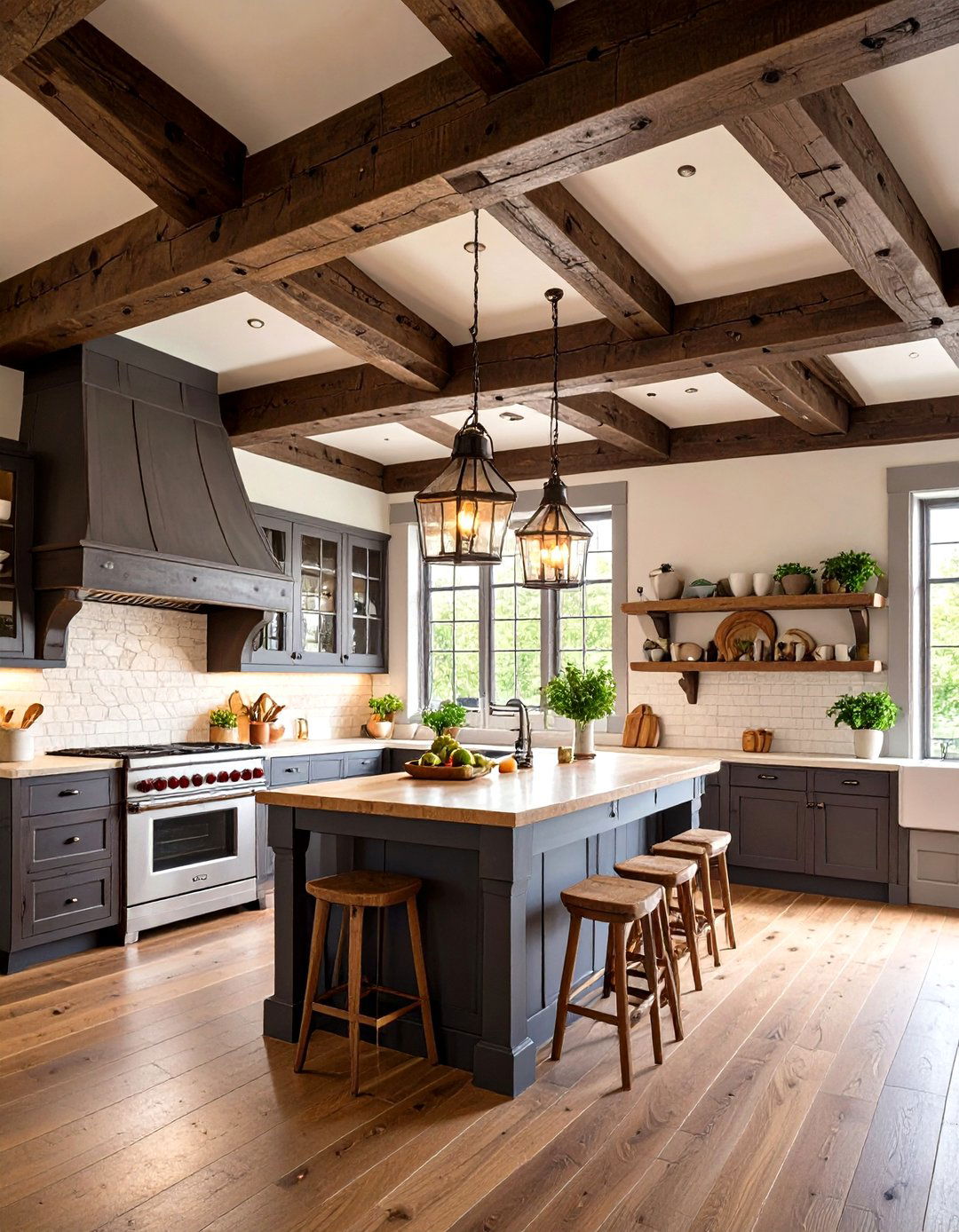
In a Tudor kitchen, prominently displaying exposed ceiling beams instantly evokes the era’s timber-frame construction. Opt for dark-stained oak or reclaimed wood beams to contrast a light plaster ceiling, highlighting their raw texture and natural grain. Beyond decoration, these beams can serve structural or practical functions—supporting open shelving or hanging pot racks—while reinforcing the room’s historic ambiance.
2. Leaded Glass Windows
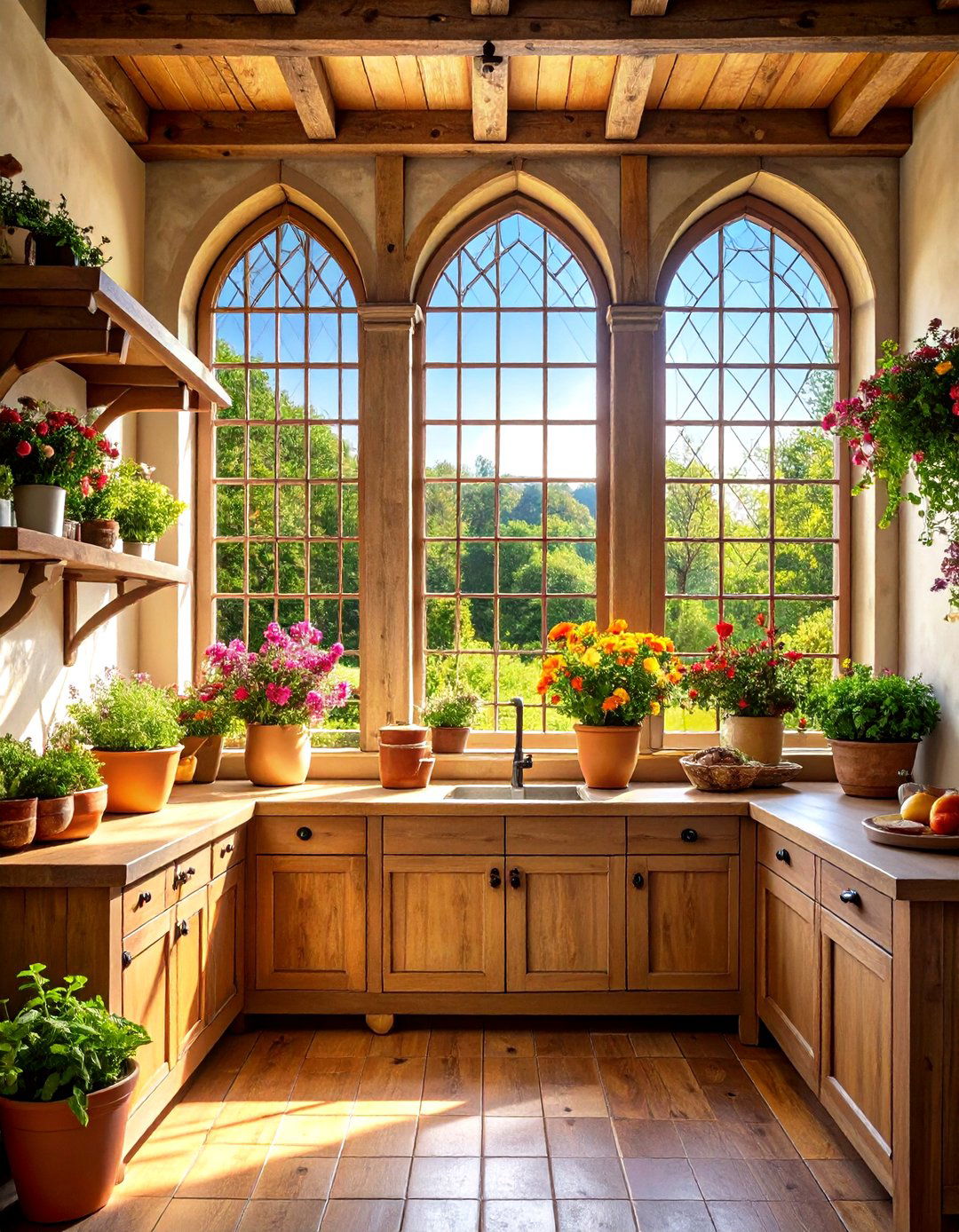
Leaded glass windows with small diamond or rectangular panes capture the medieval spirit of Tudor architecture. These windows filter light into dappled patterns, creating a warm, intimate atmosphere. For modern efficiency, choose insulated glazing units that mimic traditional lead came but offer improved thermal performance. Pairing such windows with deep wood sills invites display of potted herbs or vintage ceramics, enhancing both function and authenticity.
3. Arched Doorways and Niches

Rounded or Tudor-arch doorways and recessed wall niches introduce elegant curves reminiscent of medieval castles. Use solid wood doors with iron strap hinges to emphasize authenticity. Niches can showcase decorative plates, antique cookware, or a small Madonna statue, harking back to period devotional displays. Incorporating plaster surrounds painted in muted earth tones deepens the tactile, handcrafted feel.
4. Rich Wood Cabinetry
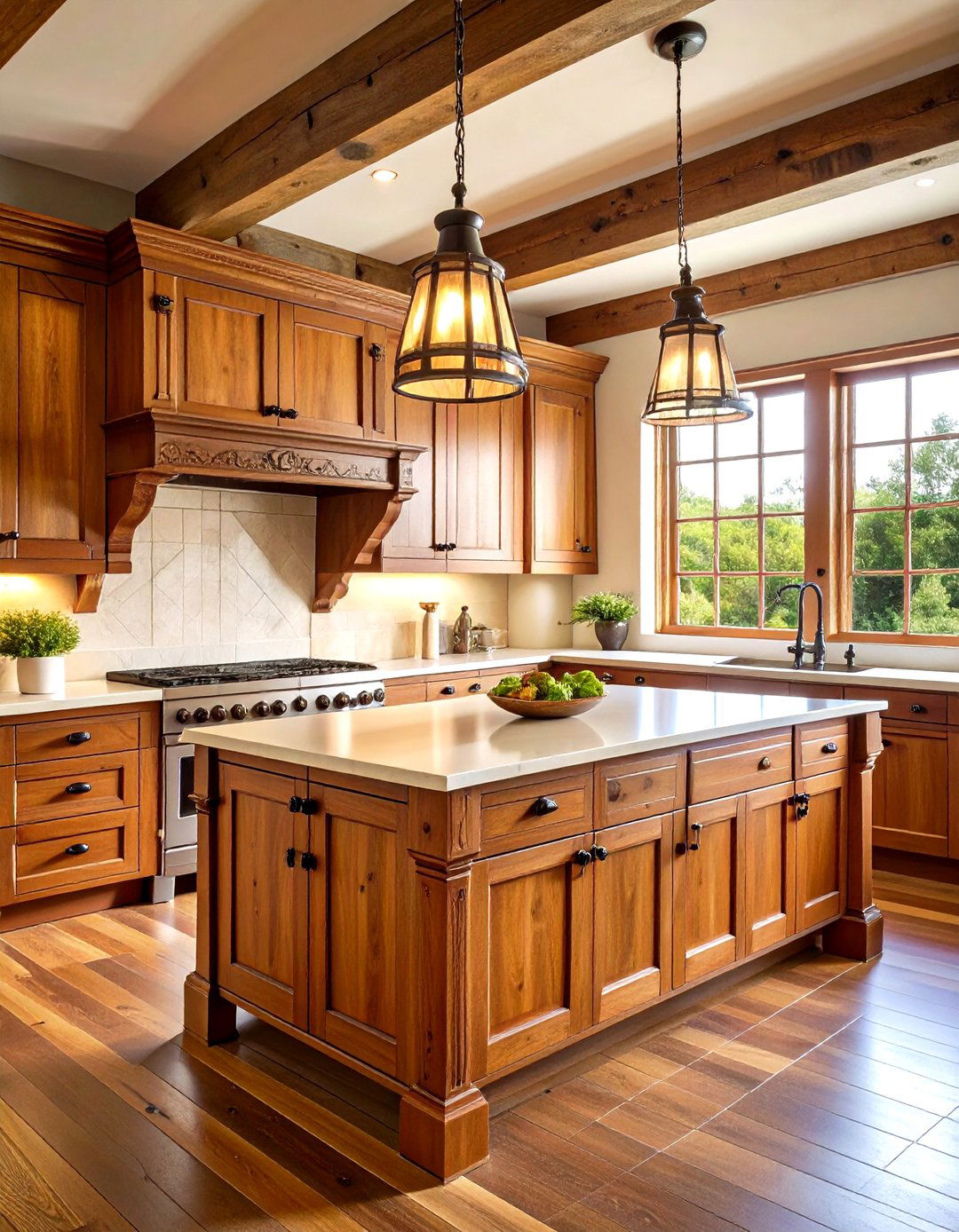
Opt for cabinetry crafted from walnut, oak, or cherry with raised-panel doors and carved corbels. Deep stains or dry-brushed finishes highlight the wood’s natural imperfections, echoing the hand-hewn look typical of Tudor interiors. Iron or brass strap hinges and hand-forged latches reinforce the period style, while modern storage solutions (pull-out shelves, soft-close drawers) ensure today’s convenience is seamlessly integrated.
5. Stone Flooring

Flagstone or large-format slate tiles in irregular shapes and earthy hues lend an authentic, durable base for a Tudor kitchen. Alternatively, reclaimed terracotta tiles can provide a warmer palette. Keep grout lines wide and uneven to mimic traditional installation methods. Underfloor heating can be hidden beneath these robust materials, maintaining comfort without compromising historic aesthetics.
6. Ornate Fireplace Hearth
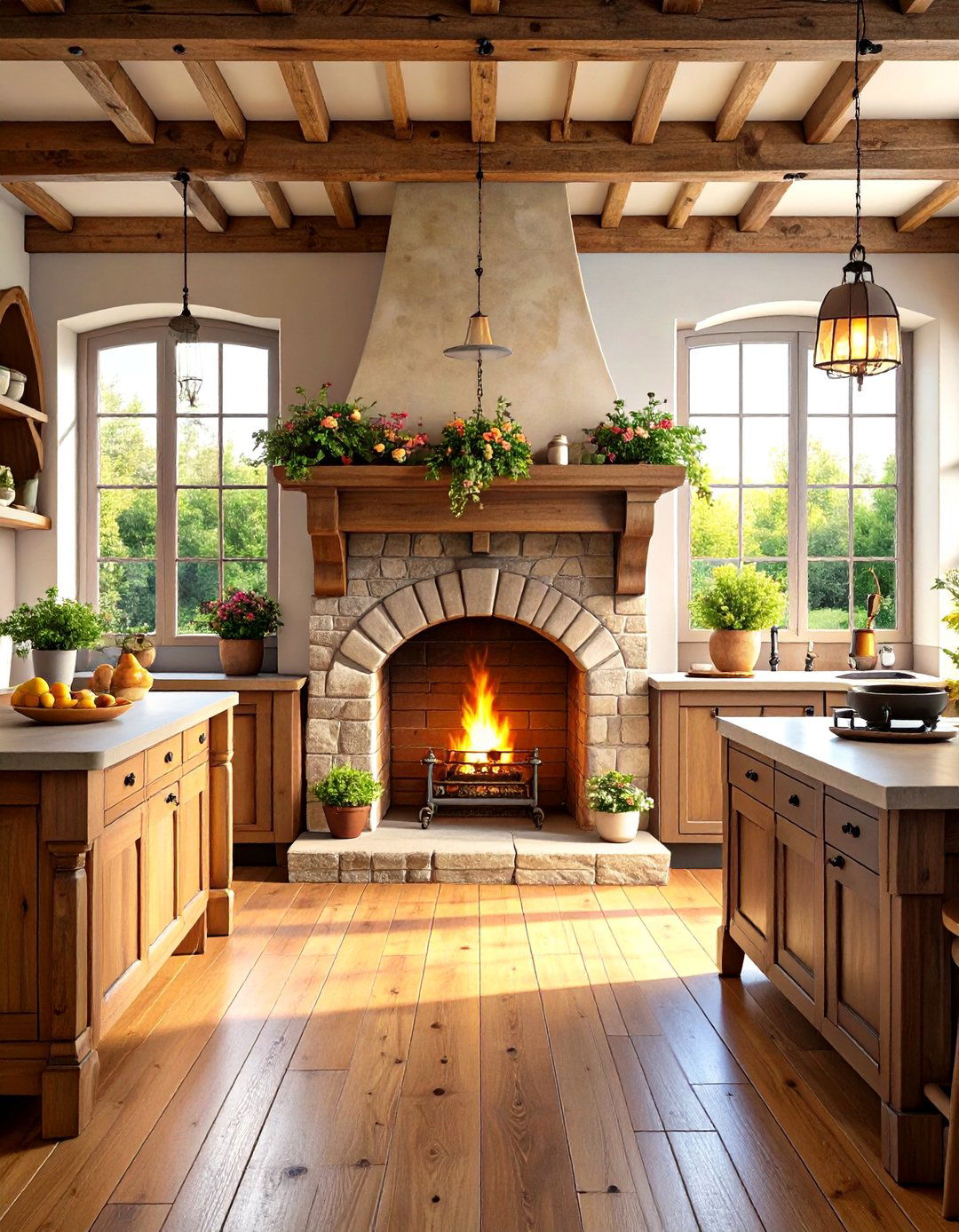
A central hearth, either functional or decorative, anchors the space and recalls medieval kitchens where open fires were primary cooking sources. Surround a large stone or brick fireplace with a custom mantel of carved wood or stone. For modern use, install a wood-burning stove or gas insert that retains the fireplace’s visual impact while offering safe, efficient heat.
7. Wrought-Iron Hardware and Lighting
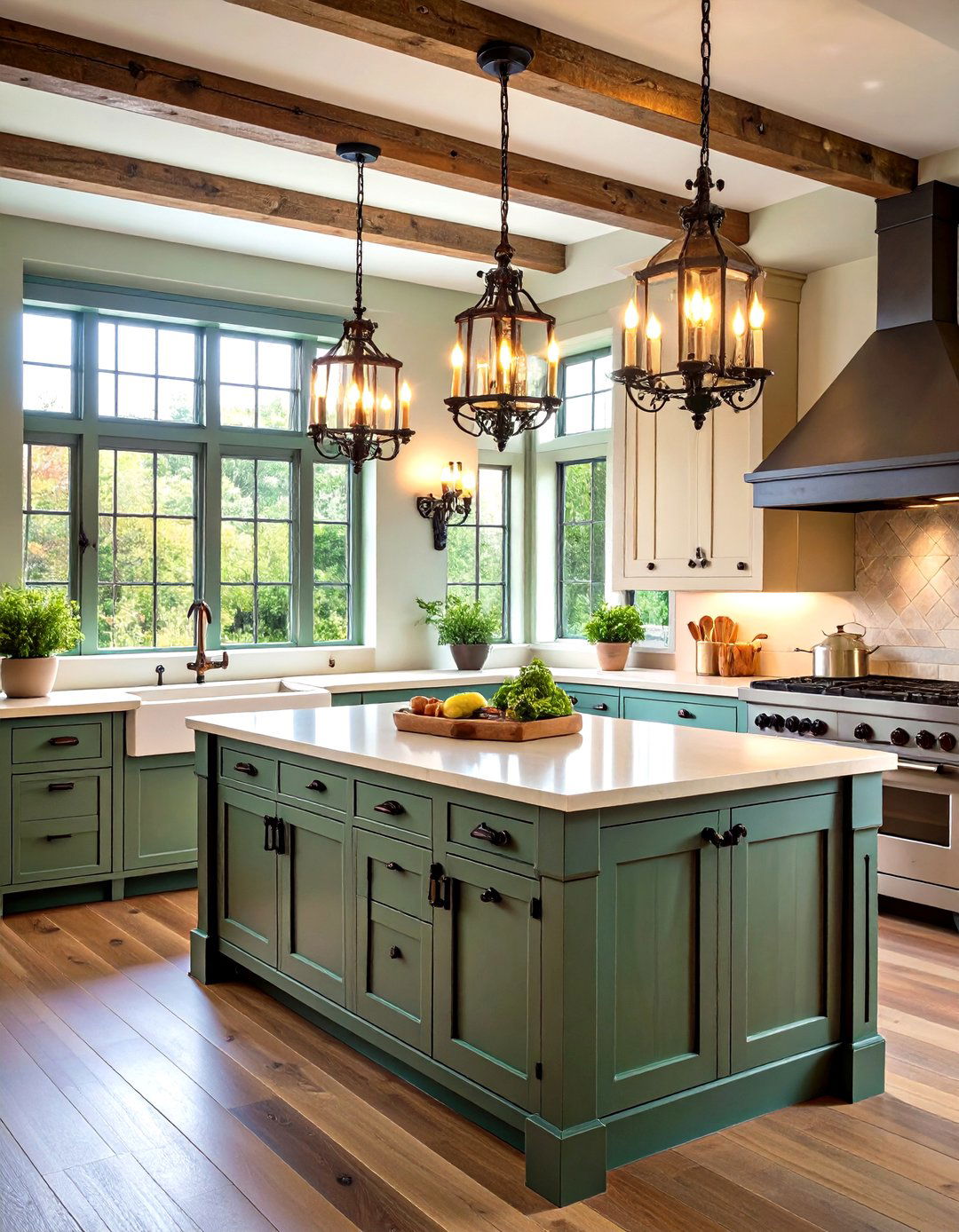
Hand-forged iron hardware—cup handles, strap hinges, and drawer pulls—adds artisanal detail. Complement these with wrought-iron chandeliers or wall sconces featuring candle-style bulbs. The interplay of metal’s dark patina against warm wood and plaster enriches the room’s historic character. Dimmable LED bulbs behind frosted glass lanterns ensure practical lighting with minimal modern intrusion.
8. Terra-Cotta Backsplash Tiles
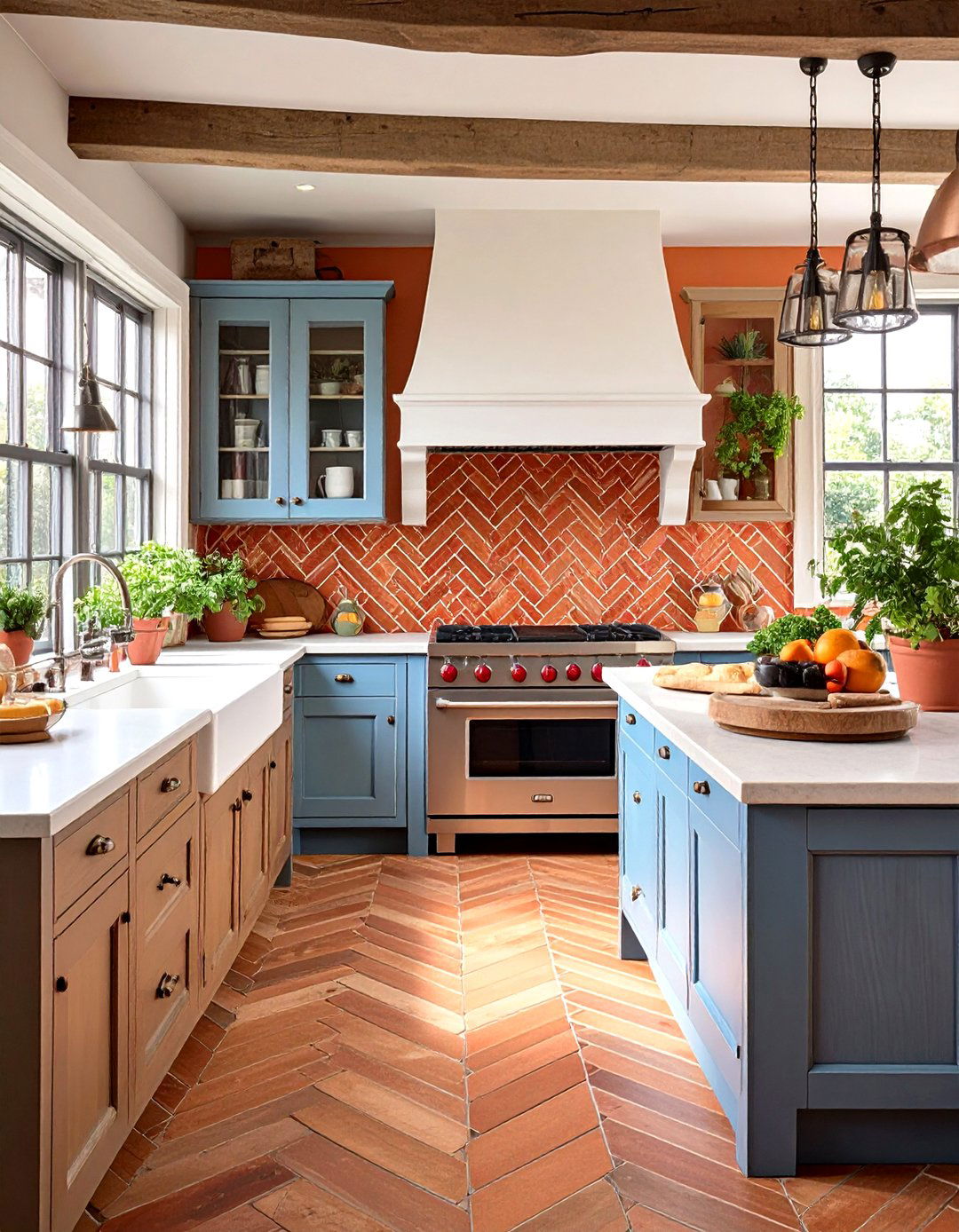
Use handmade terra-cotta or salt-glazed tiles for the backsplash, laid in simple patterns like herringbone or basketweave. Imperfect surfaces and varied glazes evoke period craftsmanship. Seal tiles properly to withstand cooking splatters. Alternatively, incorporate decorative tin tiles painted in muted metallics for a Tudor twist on kitchen splashbacks.
9. Plaster Walls with Wattle-and-Daub Effect
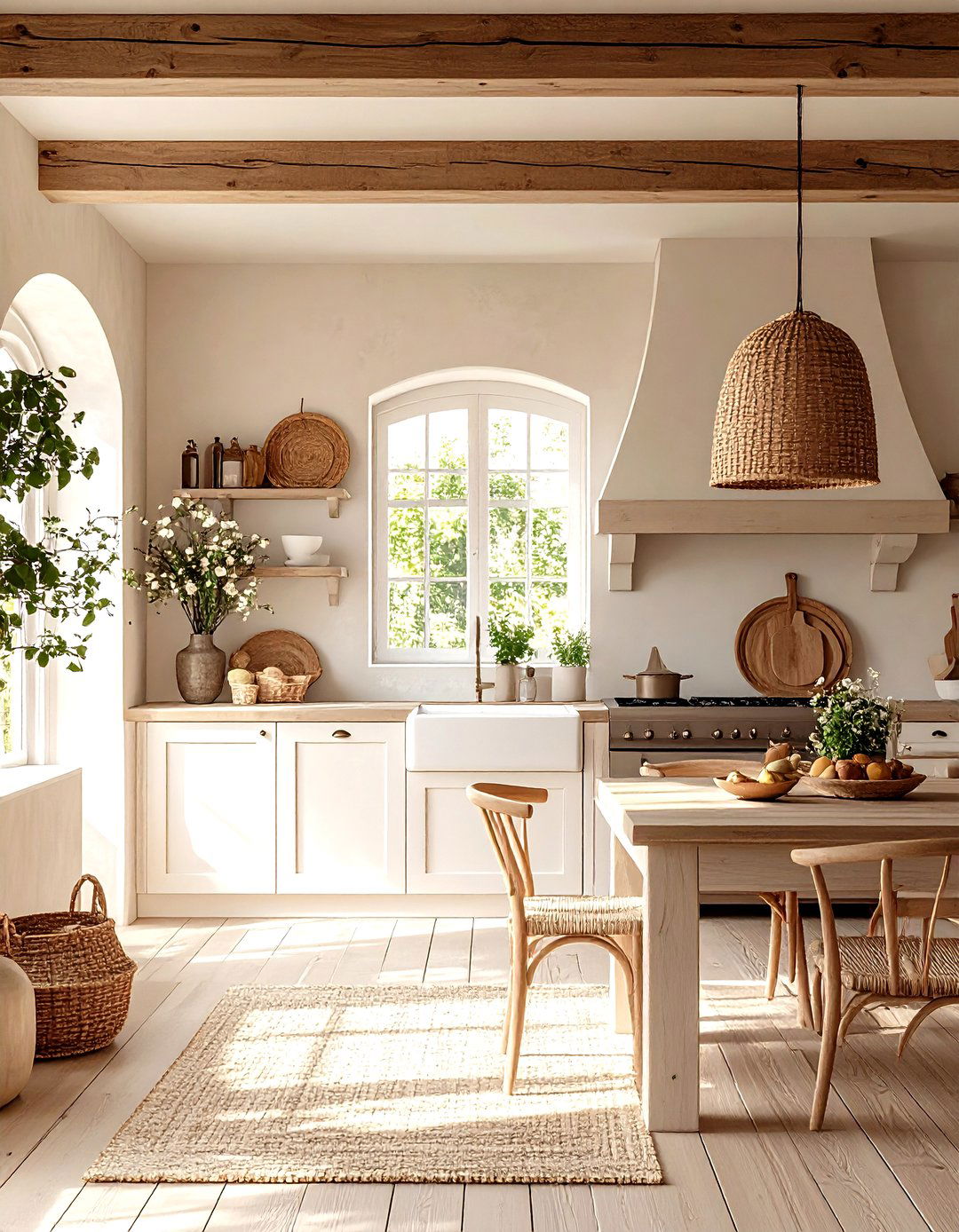
Achieve historic authenticity by plastering walls in lime-based finishes with subtle texture. A faux wattle-and-daub treatment—using timber strips and plaster infill—can be purely decorative yet suggest the structural method of Tudor construction. Choose warm neutrals (cream, greige) to complement wood and stone elements while reflecting ambient light gently.
10. Dark Color Palette

Tudor homes favored deep hues—forest green, burgundy, charcoal—often used on woodwork or accent walls. Incorporate these colors on cabinetry, island bases, or window mullions to frame the space. Balance with lighter plaster or stone to prevent an overly heavy feel. Matte or low-sheen paint finishes enhance period accuracy.
11. Medieval-Inspired Pendant Lighting
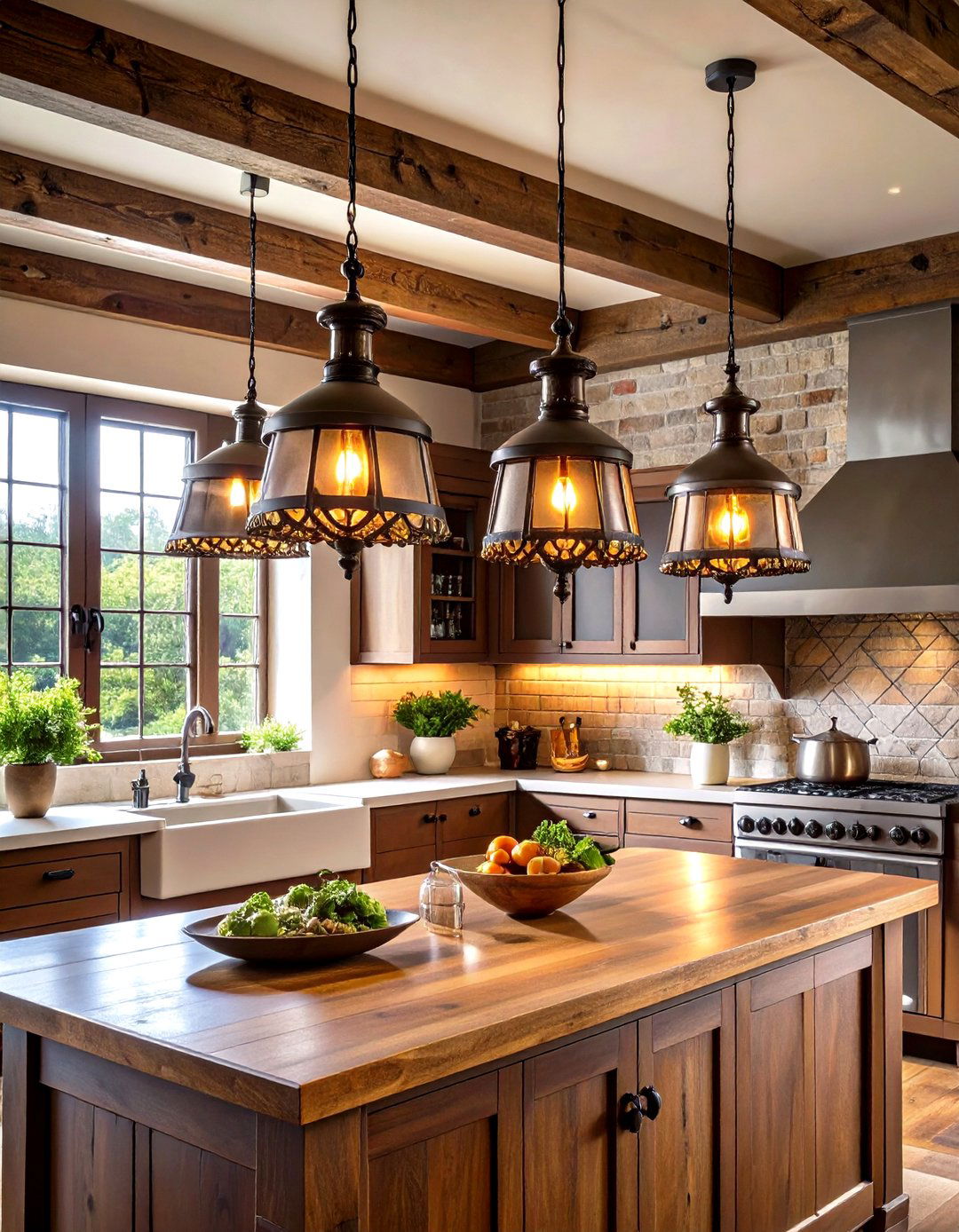
Illuminate work areas with wrought-iron or bronze pendants featuring scalloped edges or fleur-de-lis motifs. Shades can be tinted glass or metal with punched patterns casting decorative shadows. Position over islands or sink areas to blend function and historic flair.
12. Butcher-Block Countertops
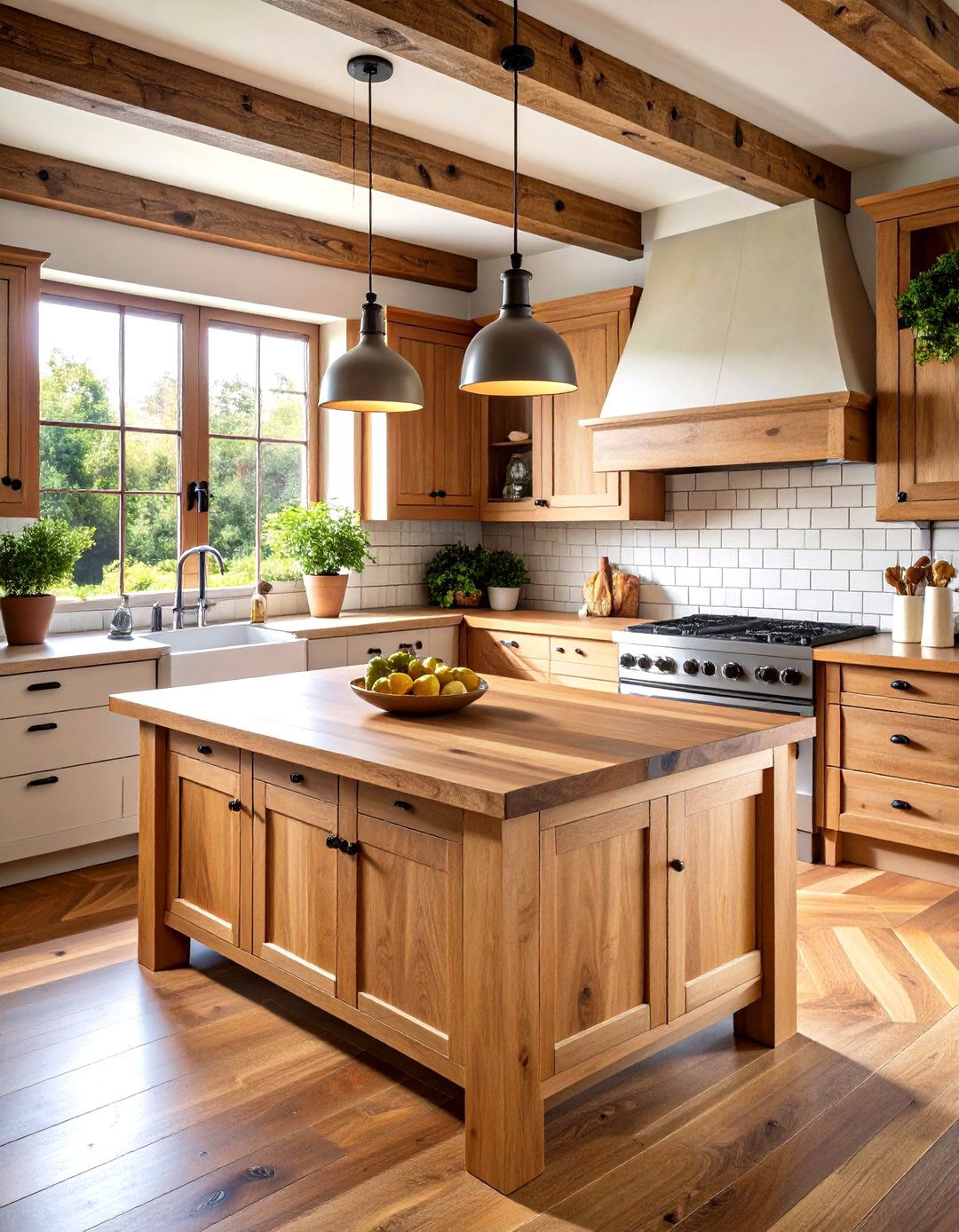
Solid wood butcher-block counters—ideally in oak or teak—offer warmth and authenticity. Sealed with food-safe oil or matte varnish, they withstand prep work while nodding to medieval chopping blocks. Use contrasting stone countertops on perimeter runs for durability, reserving wood for focal areas like islands.
13. Decorative Tile Inlays
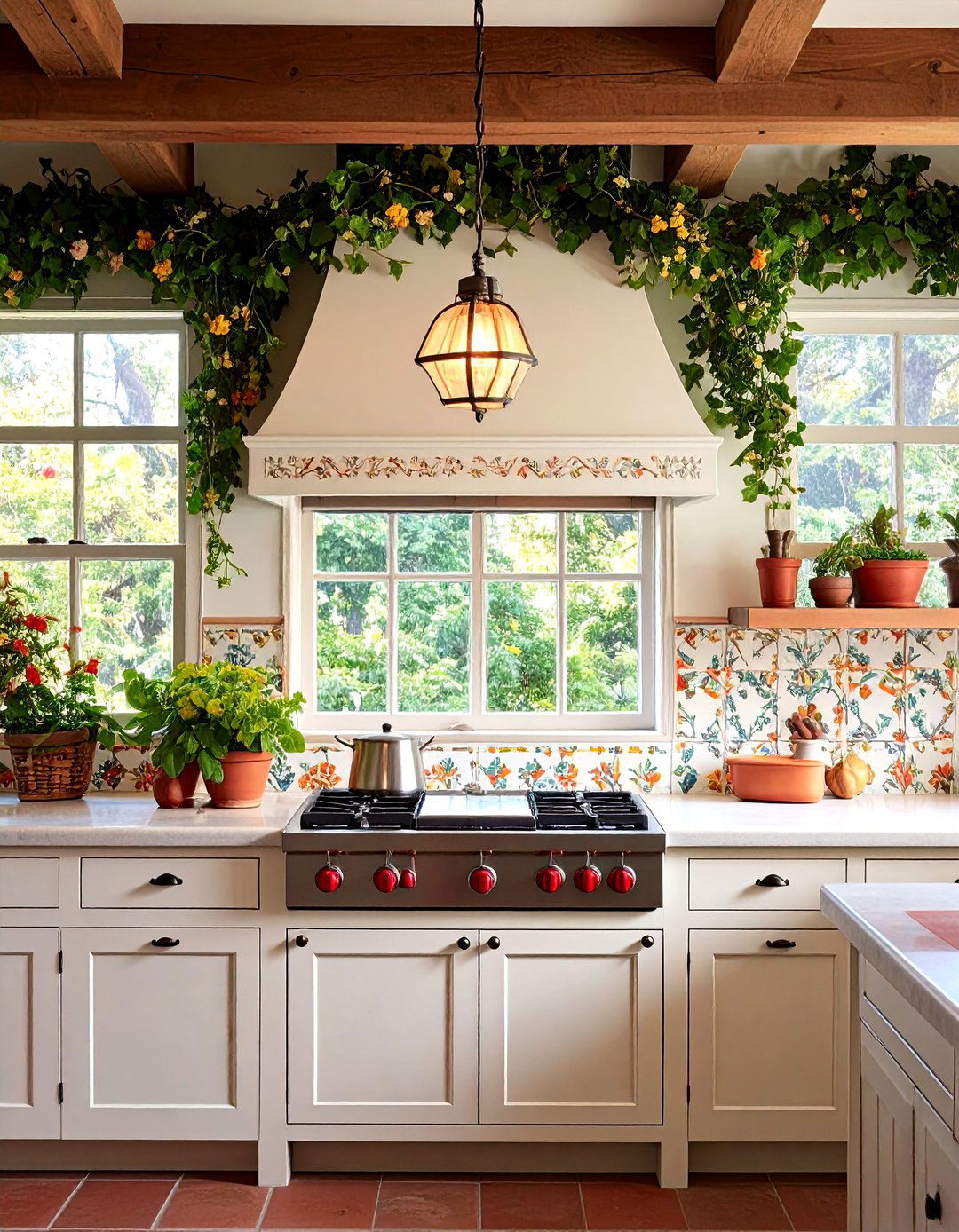
Incorporate hand-painted decorative tile motifs—floral heraldry, ivy vines, or geometric patterns—around range hoods or within backsplash fields. Custom tile artisans can reproduce medieval designs, adding personalized storytelling elements that elevate the space.
14. Open Shelving with Timber Supports
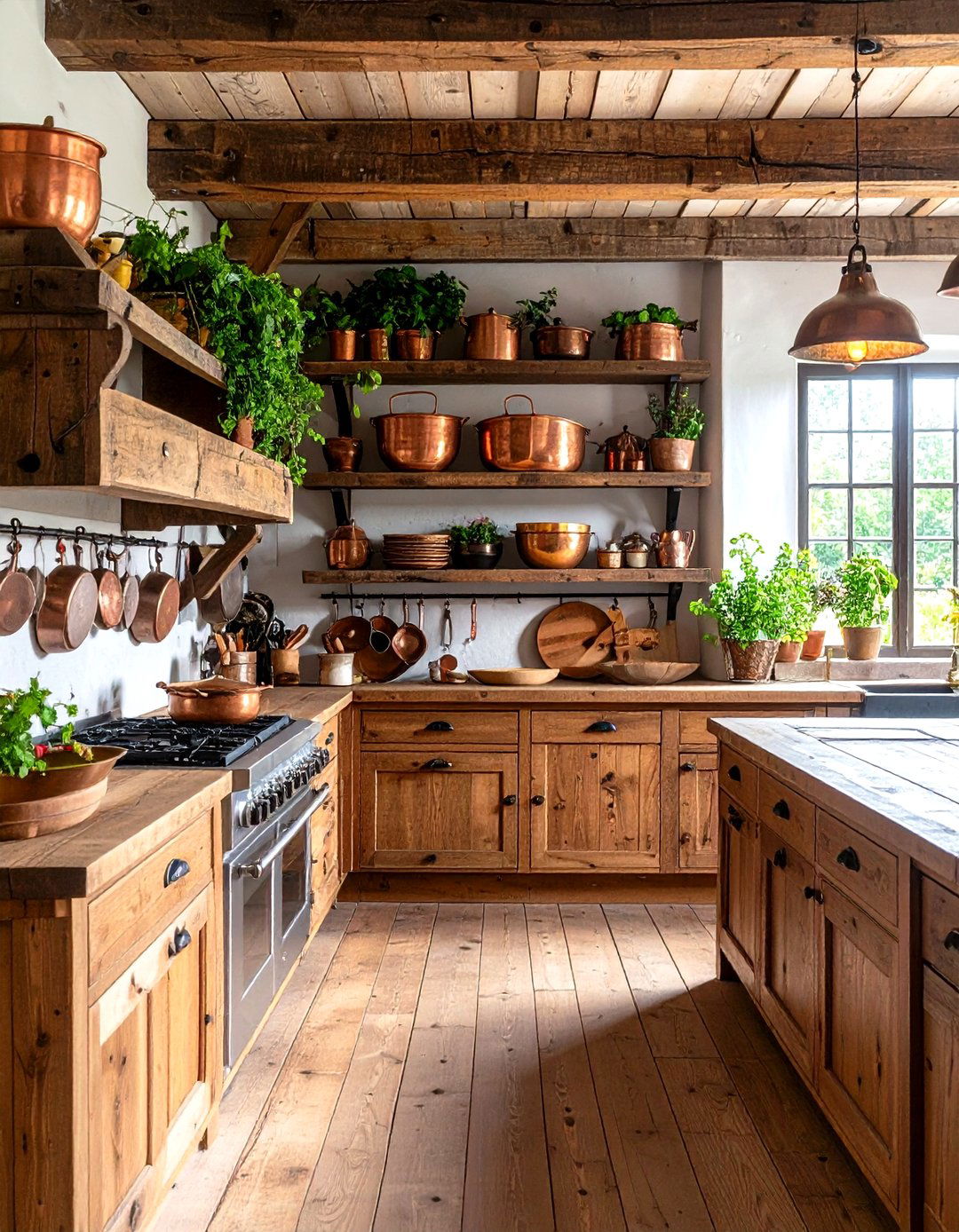
Replace some upper cabinets with open shelving held by exposed timber brackets. Display crockery, copper pots, and wooden bowls to evoke a lived-in, utilitarian kitchen. Keep shelving wood weathered and unpainted for a rustic touch.
15. Large Farmhouse Sink

A deep apron-front sink in fireclay or hammered copper suits the scale and sturdiness of a Tudor kitchen. Pair with bridge faucets in oil-rubbed bronze or antique brass for a cohesive period look that balances elegance and function.
16. Built-In Pantry Cupboards
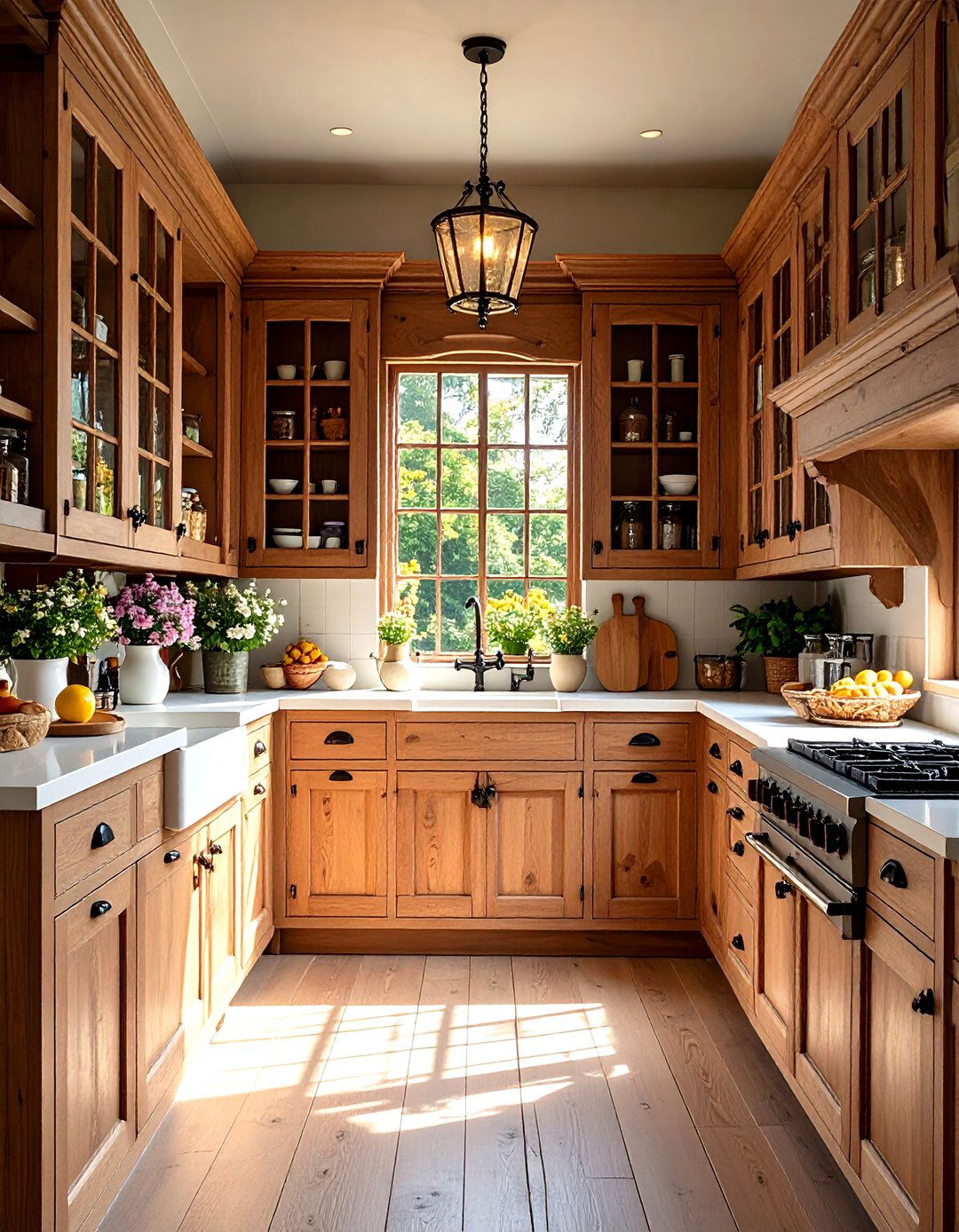
Incorporate floor-to-ceiling built-in cupboards with leaded-glass or wood-paneled doors. Interior organizers—pull-out baskets, spice racks—ensure modern efficiency. Externally, the continuous vertical lines and Tudor striping harmonize with half-timber detailing.
17. Heavy Wooden Doors with Iron Latches
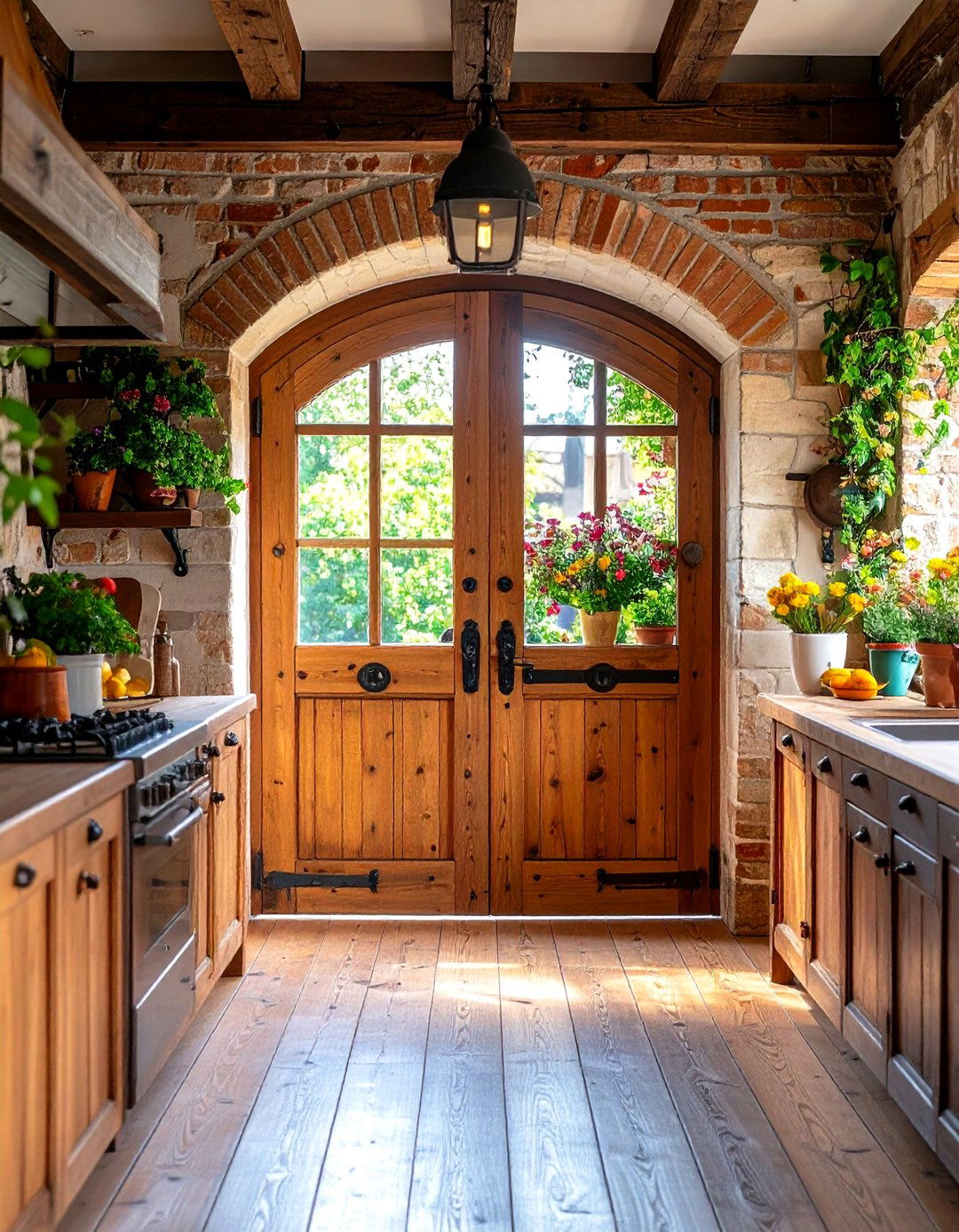
Use solid plank doors for pantry or cellar access, fitted with hand-forged iron latches and knockers. These dramatic entries reinforce the historic narrative and provide tactile engagement every time you enter the space.
18. Patterned Rug Runners
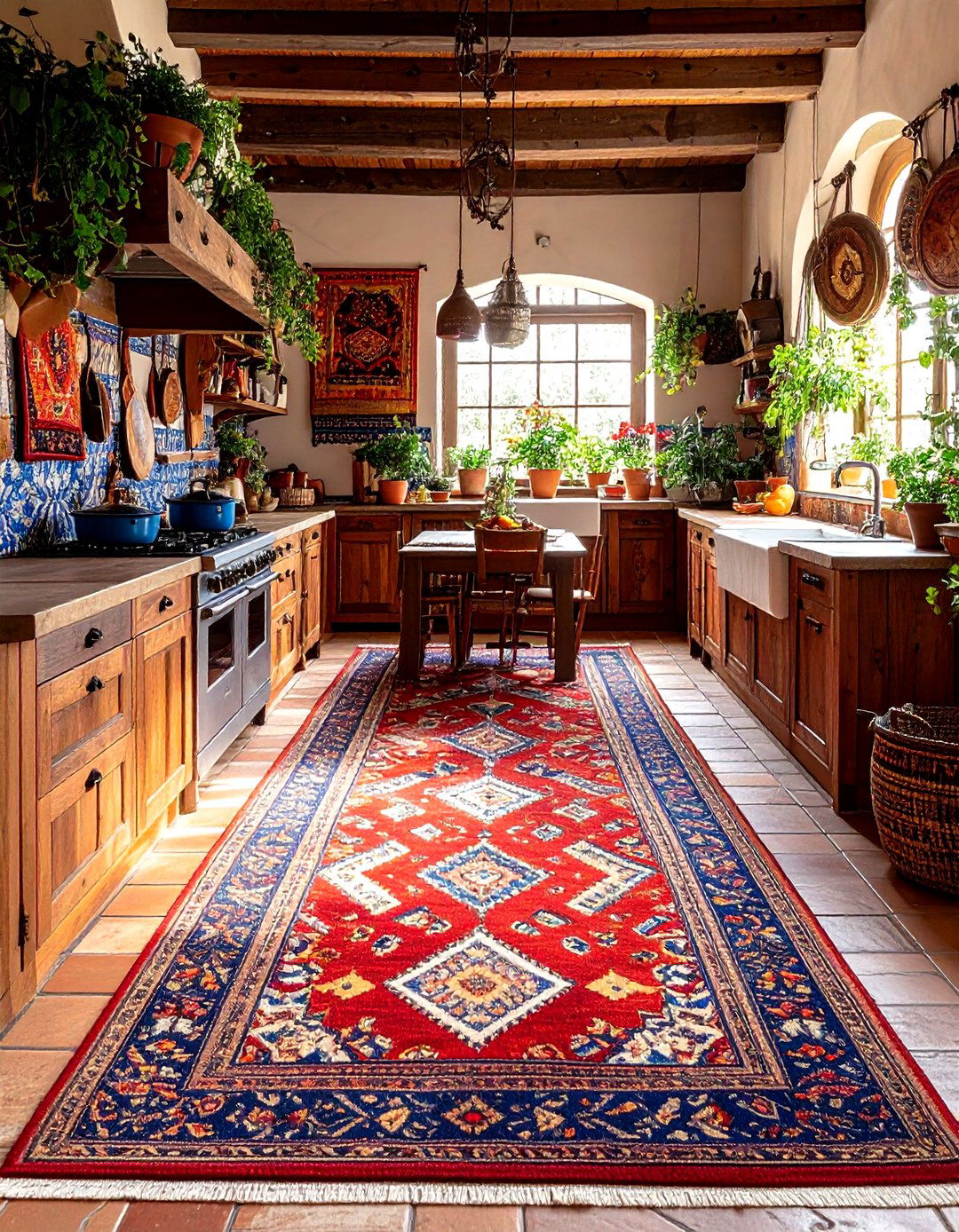
Lay wool or flatwoven runners in traditional Persian or geometric patterns along work aisles. These add warmth underfoot, absorb spills, and introduce color and texture, echoing the textiles found in medieval great halls.
19. Antique Accessories and Decor

Accent open shelves and countertops with antique breadboards, wooden dough bowls, wrought-iron trivets, and pewter candlesticks. These objects of daily use add layers of authenticity and personal narrative to the kitchen’s story.
20. Herb Garden Window Box
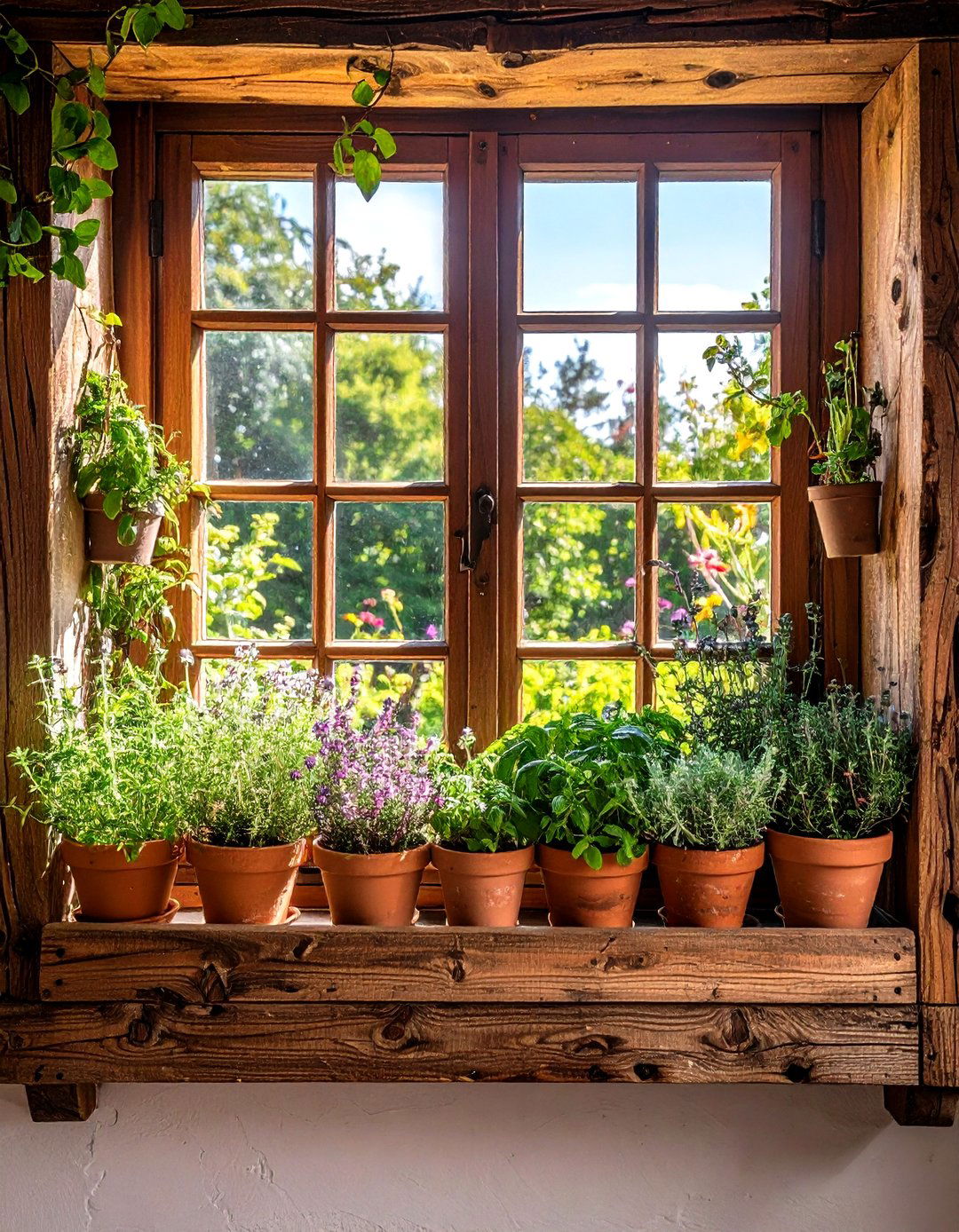
Install a built-in window box outside a cottage-style kitchen window in reclaimed timber. Grow culinary herbs—thyme, rosemary, sage—in simple terracotta pots. This living detail connects the kitchen to its edible landscape and underscores the self-sufficient ethos of Tudor households.
Conclusion:
By integrating these twenty design elements—ranging from exposed beams and leaded glass to artisanal hardware and period-appropriate finishes—you can craft a Tudor-inspired kitchen that feels both authentic and thoroughly livable. Emphasizing natural materials, medieval motifs, and hand-crafted details ensures a richly layered space that honors historic roots while accommodating contemporary needs. Whether you adopt a single feature or undertake a full Tudor-style renovation, these ideas provide a comprehensive roadmap to create a kitchen imbued with the warmth, character, and timeless appeal of old English manor houses.



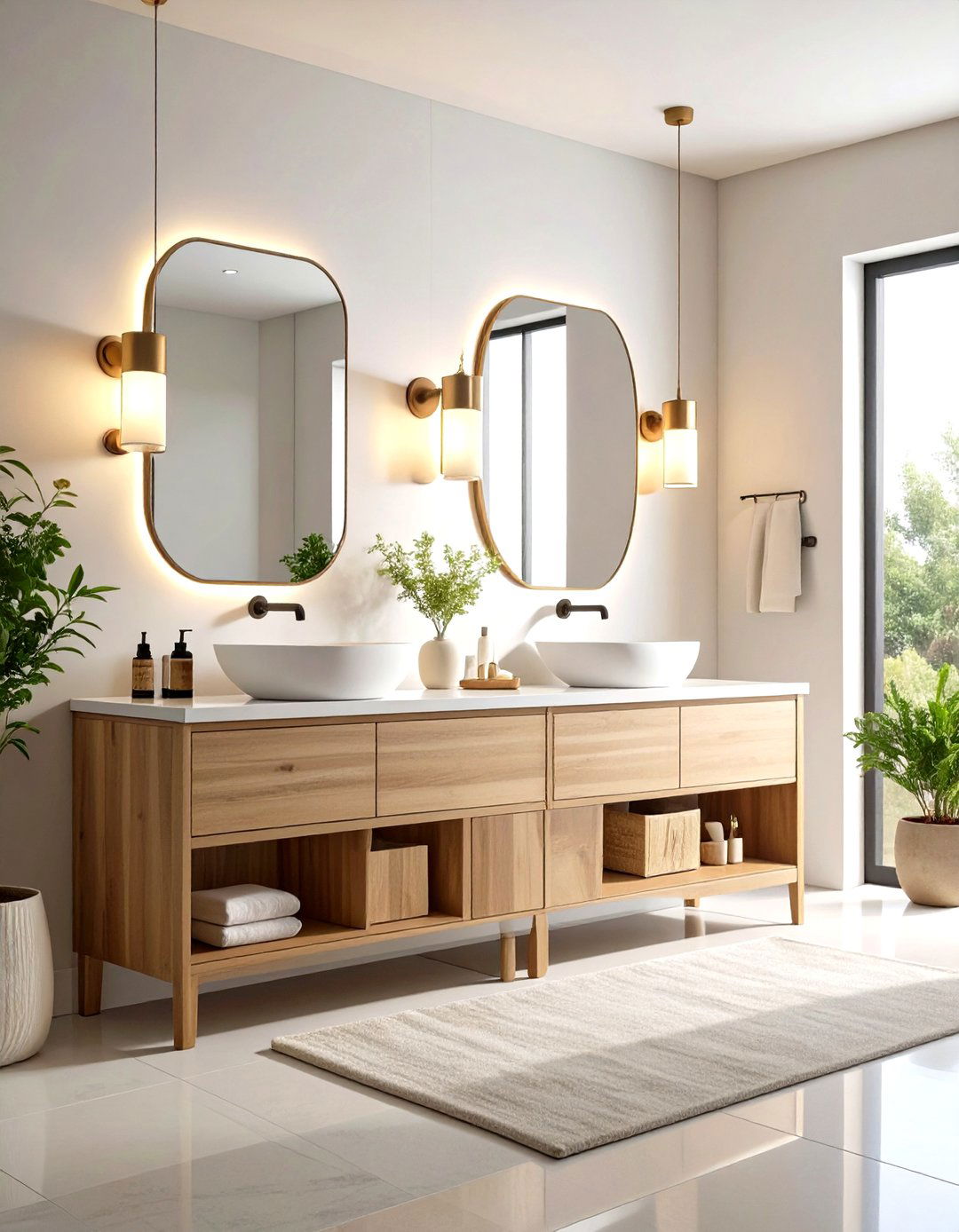

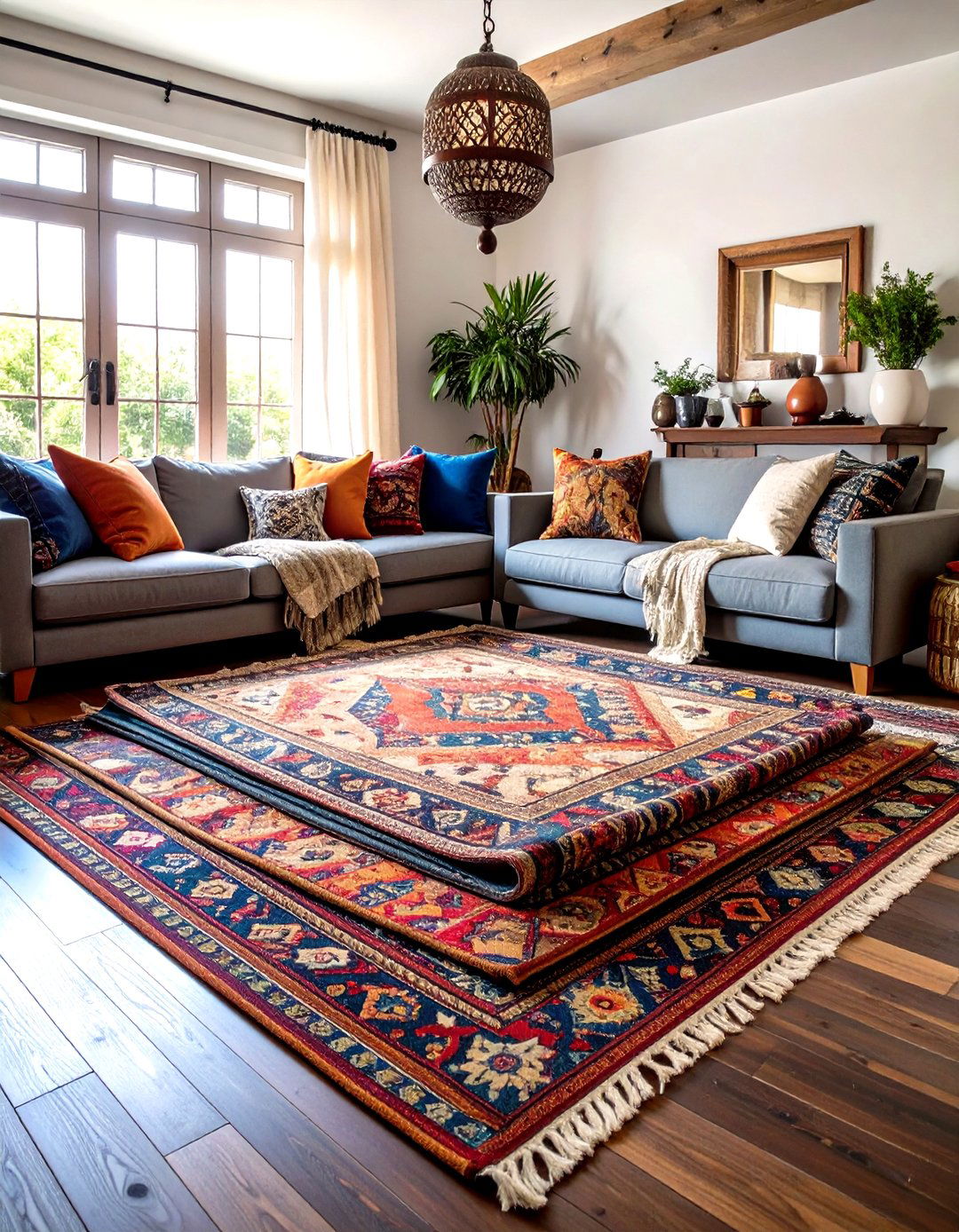
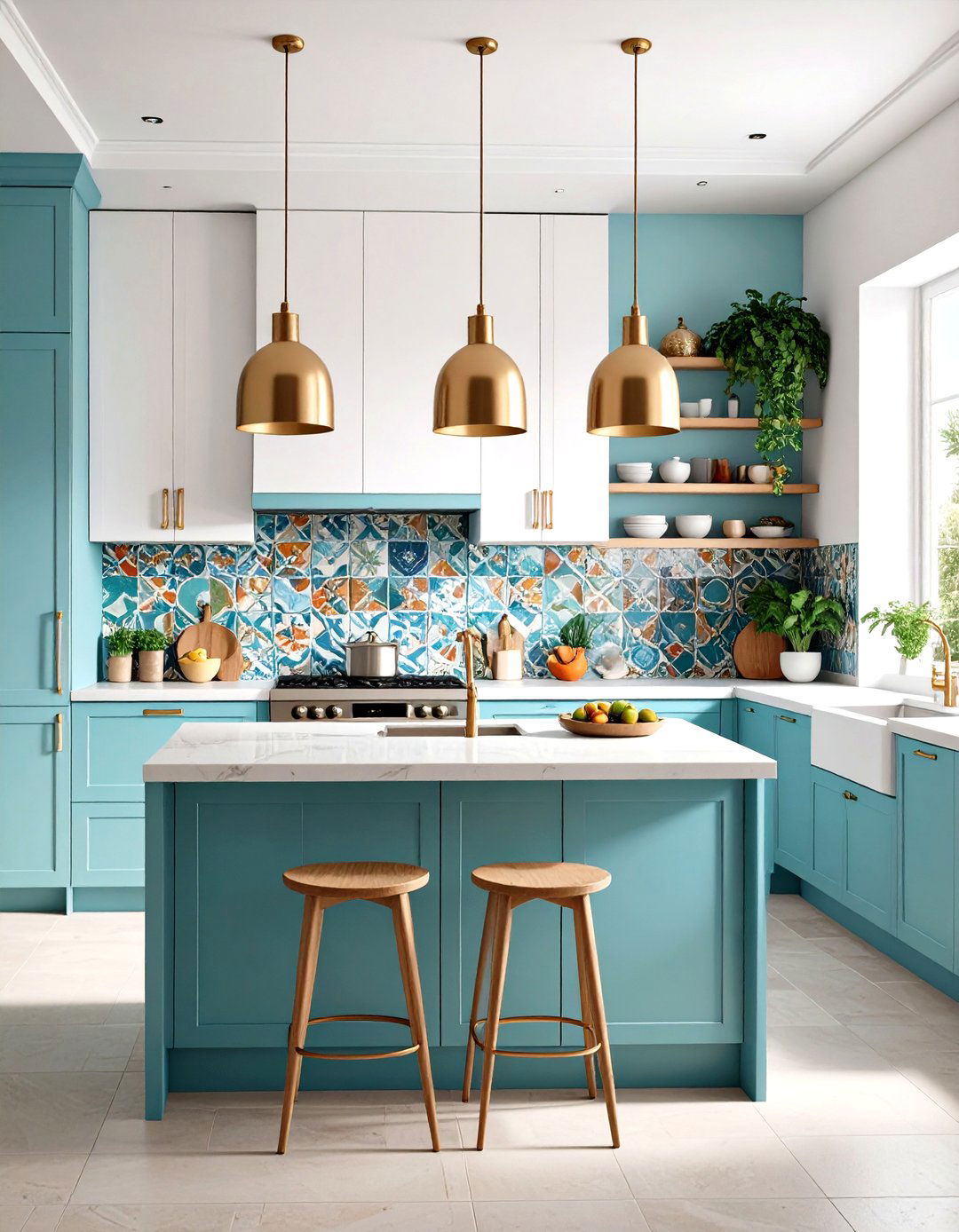

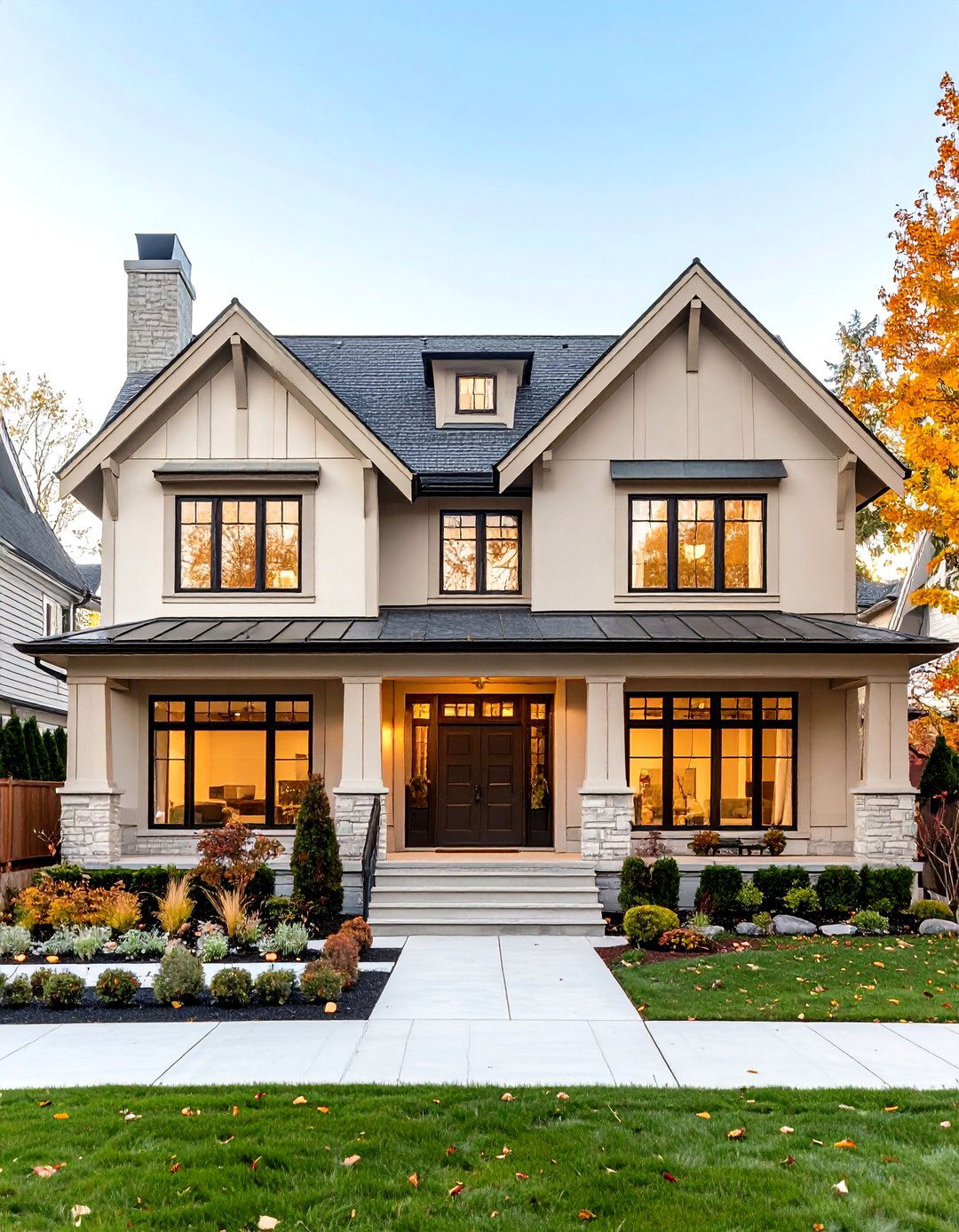
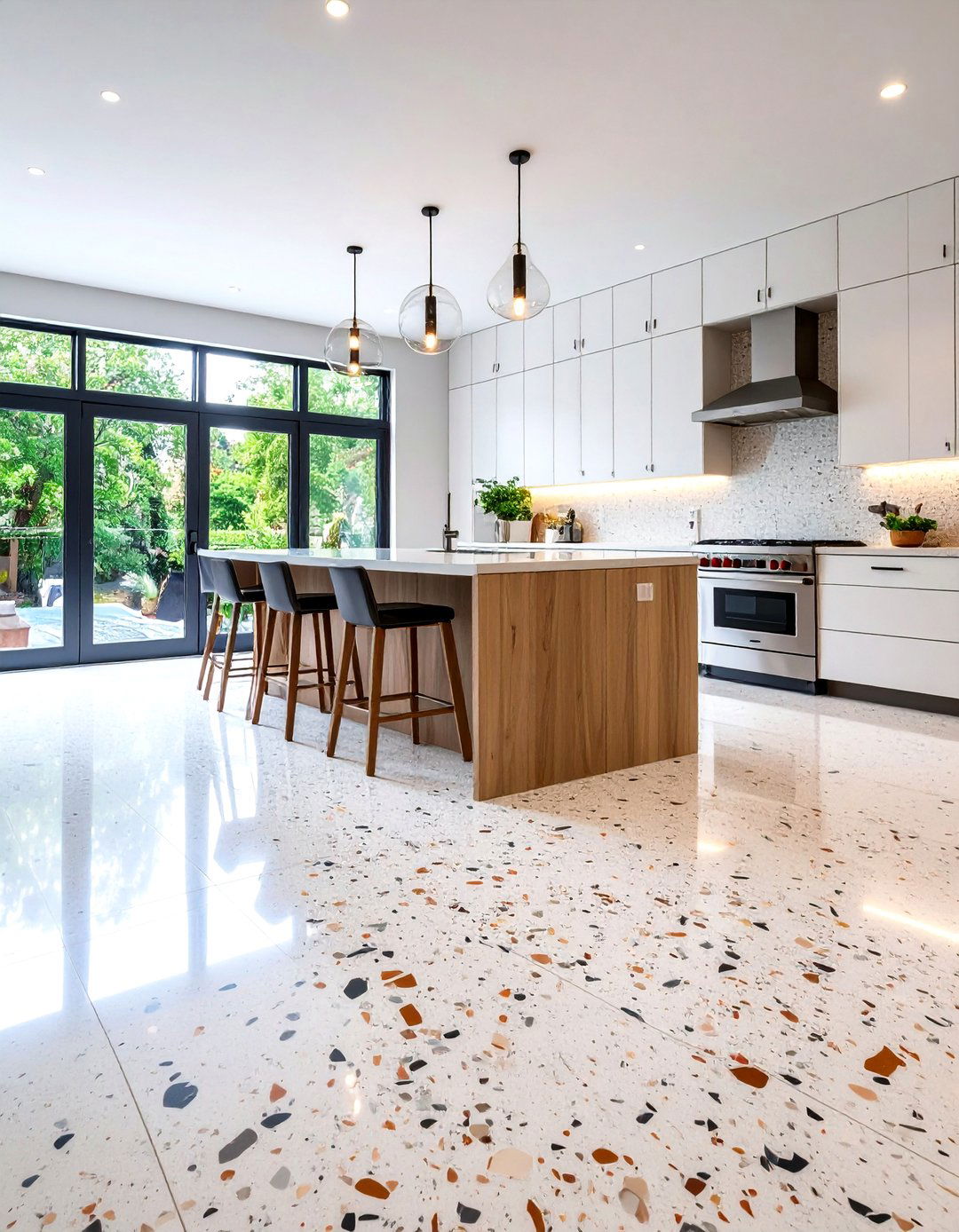
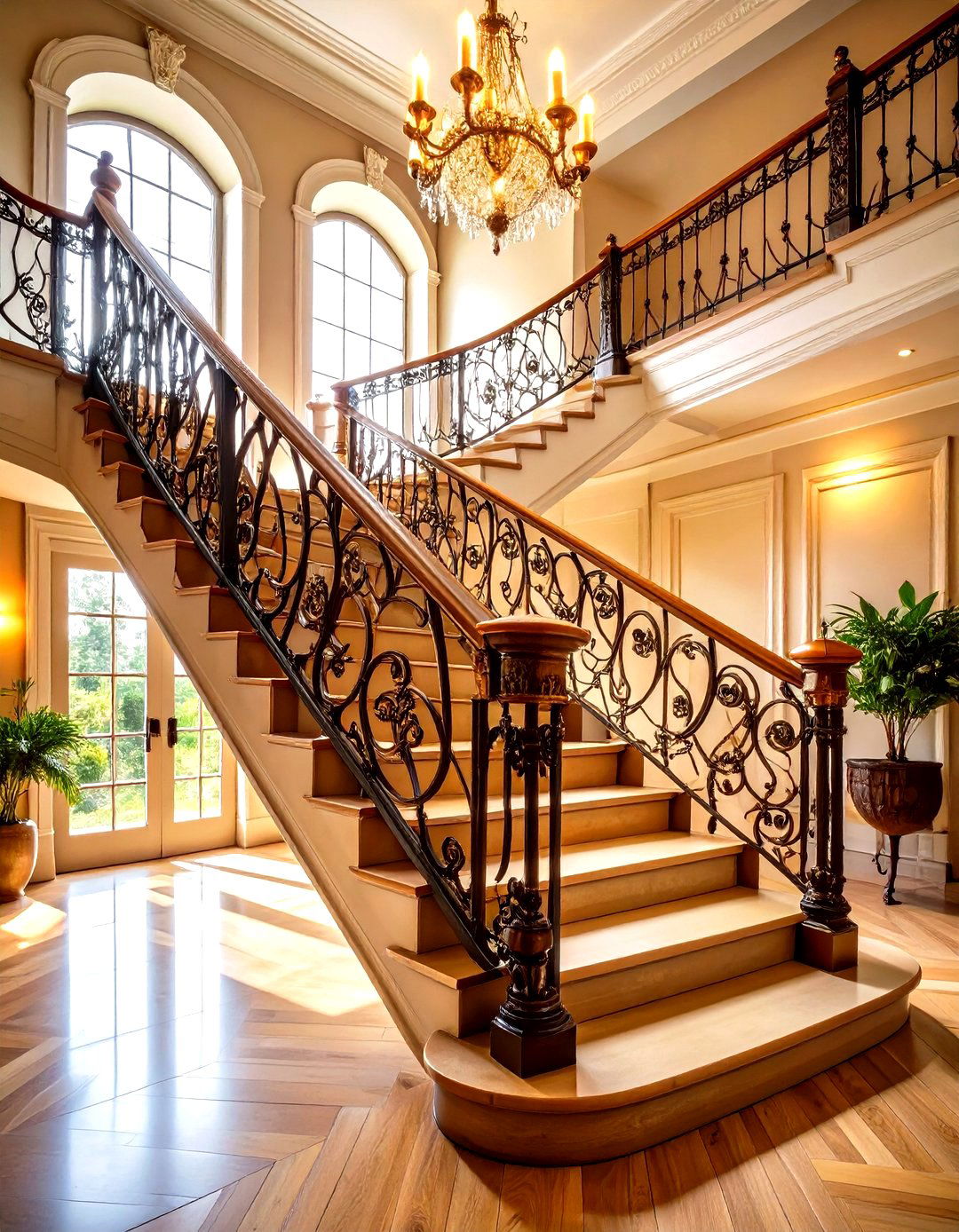
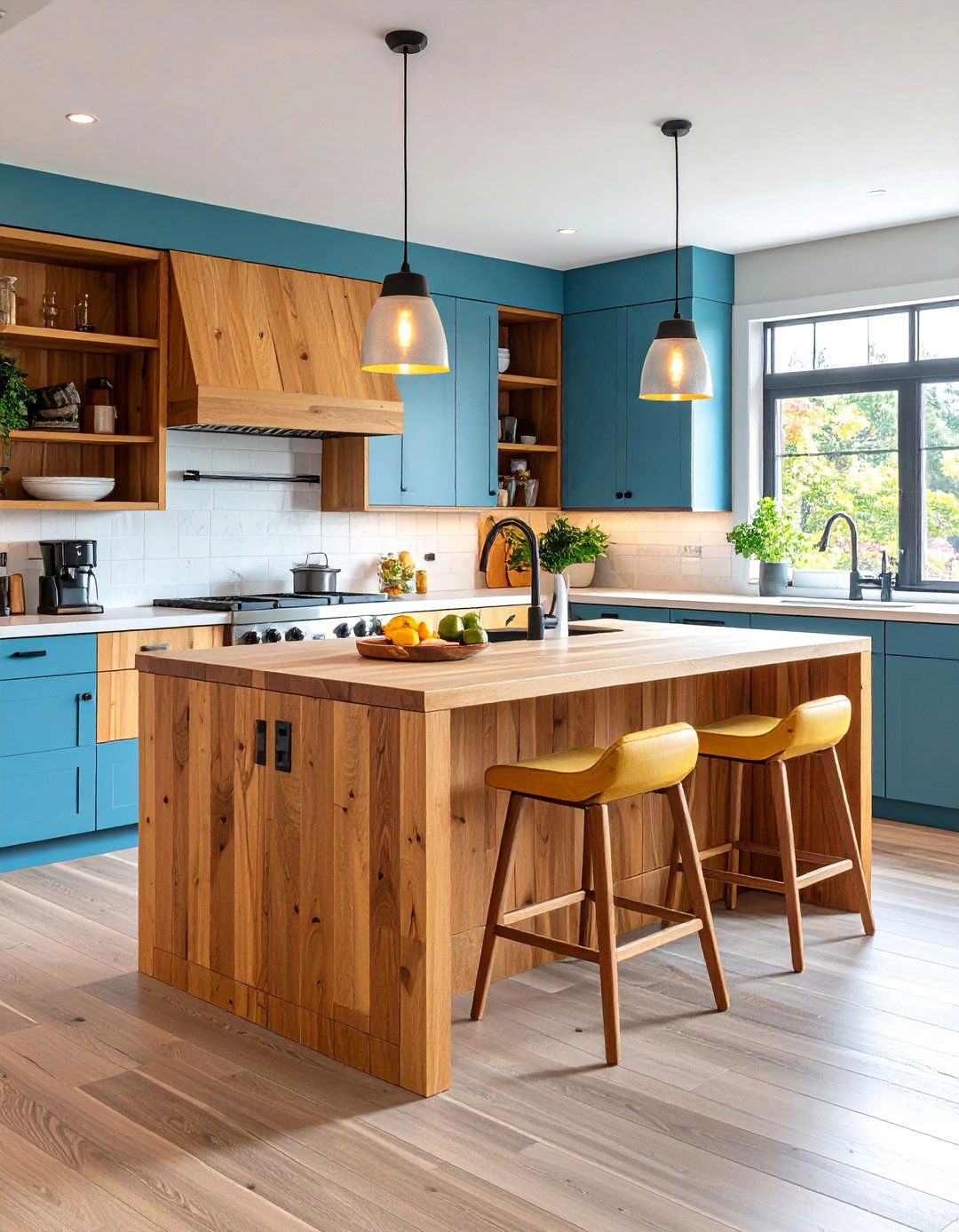
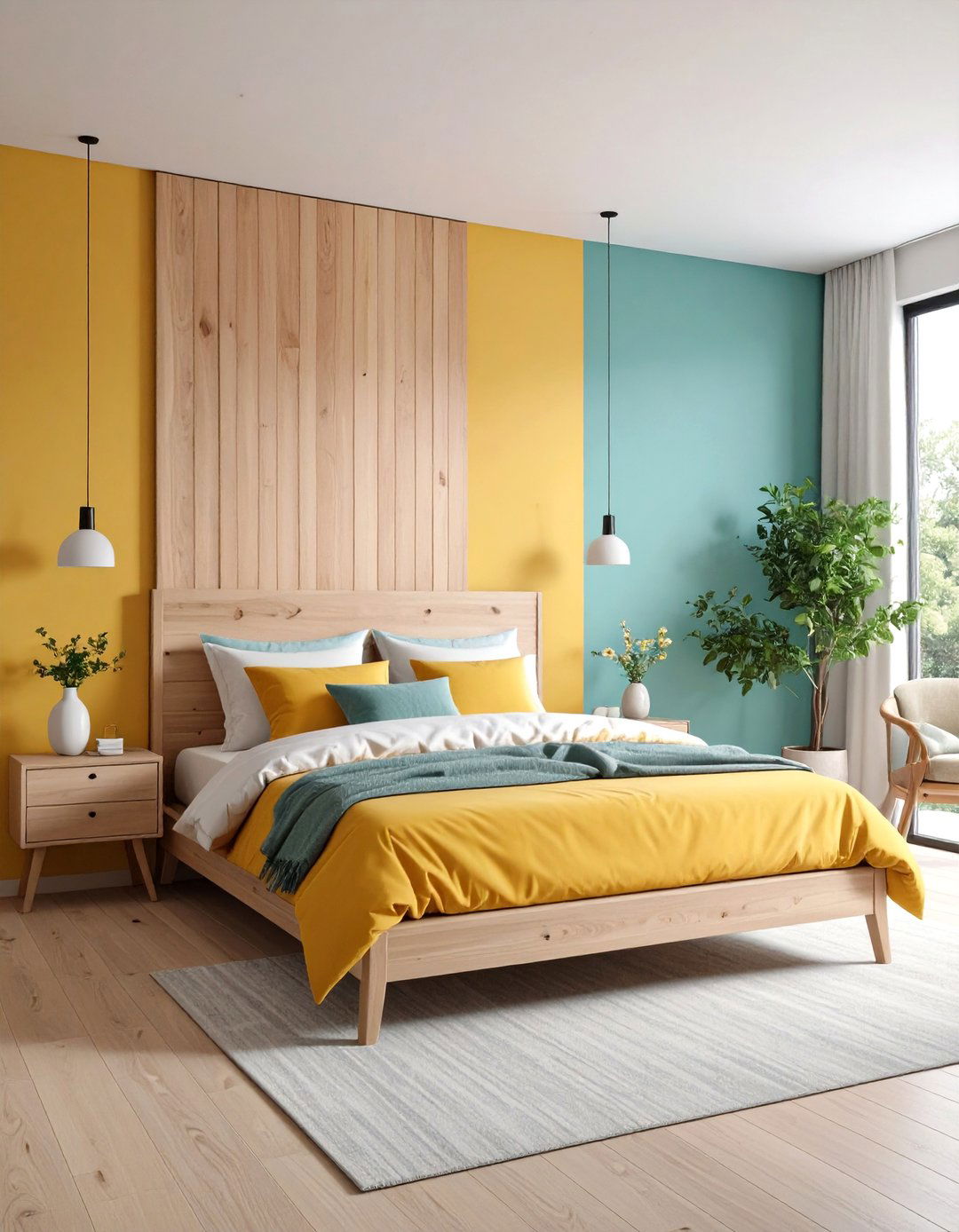
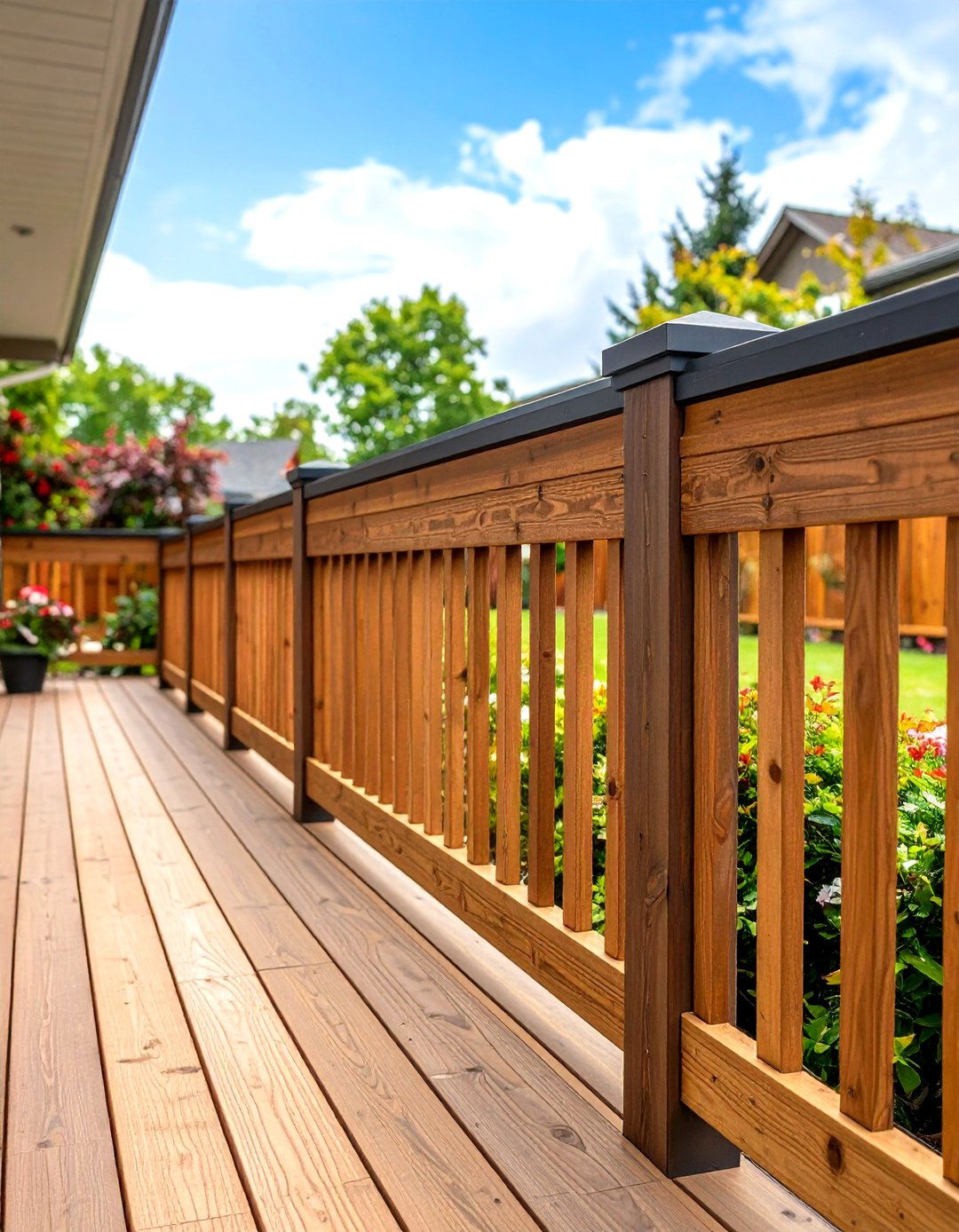

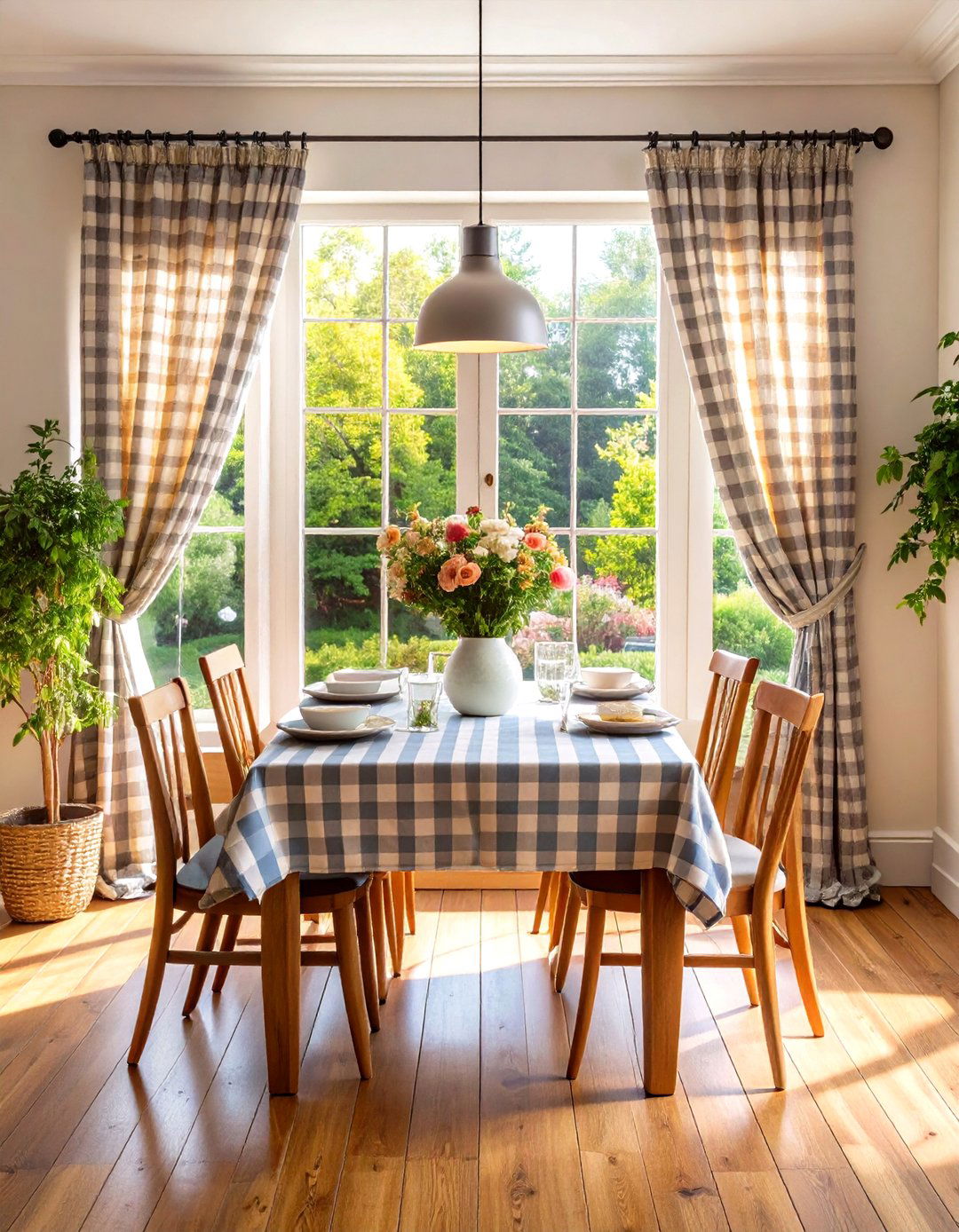
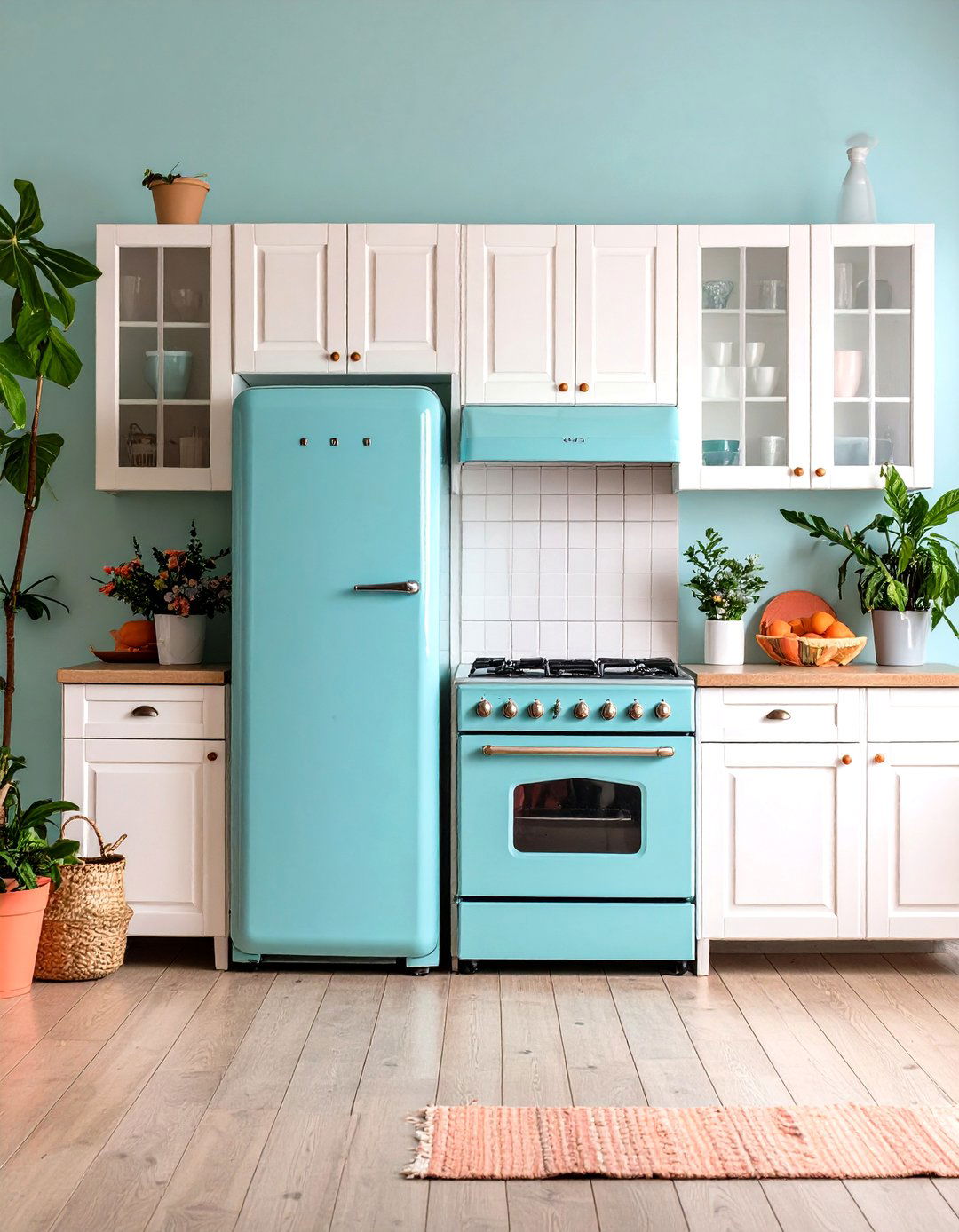
Leave a Reply